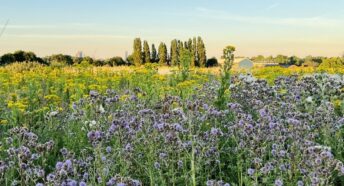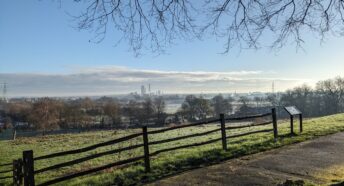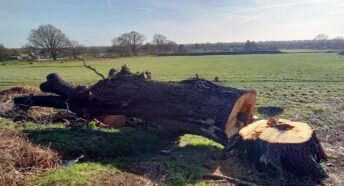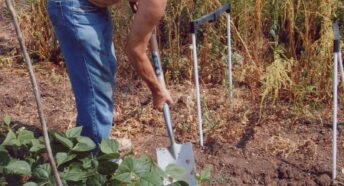Threat to protected land at Green Dale Fields in Southwark
CPRE London has today written to the Mayor of London over concerns that he is allowing inappropriate development on London’s Metropolitan Open Land (MOL) in Southwark.
Alice Roberts of CPRE London said: “We feel very strongly that the Mayor’s assessment is incorrect and sets a worrying precedent whereby any area of a public park or playing fields could have a club sports stadium built on it, so it is effectively no longer primarily there for public use.”
The GLA’s assessment quotes national policy saying that “the provision of appropriate facilities for outdoor sport, outdoor recreation” on protected Green Belt or MOL is appropriate.. “as long as it preserves the openness of the Green Belt (MOL).”
Alice continued: “We disagree with the Mayor’s assessment for three reasons: (1) these are not ‘appropriate facilities’ given that the new pitch will not be primarily for public use (2) the nature of the provision will change entirely i.e. from ‘turn up and play’ to book/pay; and (3) in any event it is inappropriate development given the screening/fencing which impacts on the oppenness of the MOL (and the fact that this is required by the FA is not a reason to deem it appropriate).
We have therefore written to the Mayor asking that he revise his advice urgently.
CPRE London’s letter to the London Mayor
Dear Mayor,
Re: GLA/0083c/01- Green Dale Fields Park in Southwark (Dulwich Hamlet Football Club development)
I am writing to take issue with your assessment of the appropriateness of this proposed development on protected Metropolitan Open Land in Southwark. For the reasons given below, it should be assessed as inapproriate development with no special circumstances to justify the development . I would ask that you revise your advice to Southwark Council as a matter of urgency.
1. The redevelopment of the Dulwich Hamlet Football Club Stadium should not be at the expense of much used and valued natural open space, including a well-used community football pitch (which would be replaced by a MUGA a fraction of the size and which would have to be booked). Open space such as this is a rare commodity in inner London and is protected for good reasons – as you know it is of vital importance in supporting the well-being of the city’s growing population, protecting species on the borough’s Biodiversity Action Plan, and in facing the climate emergency.
2. The new stadium will be enclosed and you have correctly advised that this is inappropriate development on MOL (impacting as it will on the openness of the MOL). However, you have said that this is acceptable because the FA requires a stadium to be enclosed. This is a circular and incorrect argument: the correct conclusion should be that any football club stadium development is inappropriate on MOL, in light of it needing to be enclosed with fencing/screening. It is also inappropriate because the enclosure means it can no longer be enjoyed by the general public. And the amenity value of the remaining MOL for the public and as a SINC is also severely compromised. These aspects of ‘harm’ have not been properly recognised.
3. Alternative options have not been exhaustively investigated for the upgrading of the existing DHFC stadium or redevelopment of the existing stadium site without development on MOL.
4. The conclusion that there are “very special circumstances” that would outweigh the harm to MOL are premature in light of the above and in any event there is no clear assessment of the harm which ought to include not simply to the openness but to the amenity value including community provision but also in tackling the climate emergency.








